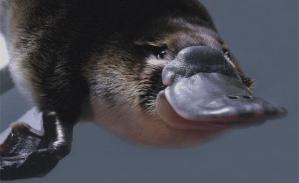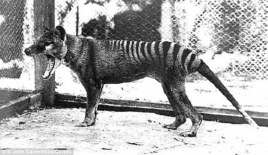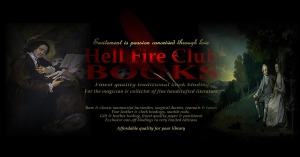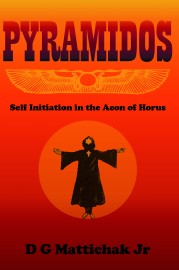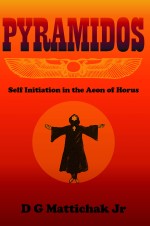
The anonymous face of the web
Once the domain of faceless corporations and tech savvy cybernerds, the internet has become the virtual playground of the Twenty-first century. The boom in internet use that has resulted from the rapid uptake of digital technology, and which has seen the number of websites grow to over 600 million in 2013 has made cyberspace a very familiar place for the majority of the 2.4 billion users that now regularly access the web . Having this level of instant access to the web has added a new, conceptual kind of social interaction to our normal daily discourses.
Sites like Blogger or WordPress, Tumblr and Facebook have generated an online subculture that shares (and often over-shares) their experience, knowledge or even random thoughts with anyone that cares to read or watch them. Like everything else that we create, this subculture generates both a light and a dark aspect to its application.
Facebook Turns Ten
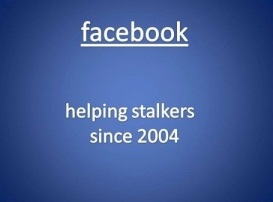
Happy Tenth Birthday Facebook!!
In a recent post to his timeline Mark Zuckerberg gushed effusively about how fantastic the first decade of Facebook has been for him personally. He waxes lyrically about the humble beginnings of what has gone on to become an almost global phenomenon that has, in many ways, redefined the nature of our social interactions as we enter a new millennium. While most of the MSM focused on Zuck’s enthusiasm for the Facebook community that has evolved, my personal takeaway from his edict was his reflection on why he was ‘the chosen one’:
“When I reflect on the last 10 years, one question I ask myself is: why were we the ones to build this? We were just students. We had way fewer resources than big companies. If they had focused on this problem, they could have done it.
The only answer I can think of is: we just cared more.”- Mark Zuckerberg
To commemorate the momentous occasion of the decennial of Zuck’s vision becoming a reality the 1.23 billion Facebook users are invited to view an online video look back of their contribution to the site. Looking over Zuck’s own video I didn’t see evidence that he cared any more than the average guy and the sanitized infographic that Facebook released to illustrate its evolution from a small student networking site at Harvard into the second most visited site on the internet notably skips past some of the less well received experiments that have been made on the website in the past ten years.
While Zuckerberg tries to focus on the positive things to have come out of Facebook, saying “It’s been amazing to see how all of you have used our tools to build a real community. You’ve shared the happy moments and the painful ones. You’ve started new families, and kept spread out families connected. You’ve created new services and built small businesses. You’ve helped each other in so many ways”, along with the opportunity to build that network of Facebook friends comes the temptation, overwhelming to some, to use the social sphere to less constructive ends. This dark side to the Facebook phenomenon is one that Zuck and his team are less comfortable talking about and, as anyone that has tried to have an offensive image or comment removed from the site will already know, Facebook really doesn’t give much of a fuck about how its users abuse their newfound freedom to comment on anything and everything that happens in the world.
How Web 2.0 Changed the World

A two way street?
In the age of Web 2.0 technology that has put the power of the internet into the hands of the average user, social media has created a platform that has encouraged people to engage with others on the web. This has created an environment where whatever you do or say either on the web or offline, there will be those that either love it or hate it and, with the immediacy of the access that is now available to users, their kudos or criticism can now be uploaded for very public consumption in a snap.
The technology for Web 2.0 has been around since the late 1990s but it didn’t reach anything near its full potential until 2006 when internet connectivity finally became a standard part of most households. It was the usability of the new configuration of the internet that made it a viable product that average people wanted to be engaged with. Blogging became a cool pastime for ordinary people and sites like MySpace and Facebook evolved the interwebz into a public forum where people (often unwisely) aired their differences with as much regularity as they shared photos of their cat or their dinner.
“The new Web is a very different thing. It’s a tool for bringing together the small contributions of millions of people and making them matter. Silicon Valley consultants call it Web 2.0, as if it were a new version of some old software. But it’s really a revolution.”- Lev Grossman Time Magazine, You- Yes, You are Time’s Person of the Year, Monday, Dec. 25, 2006
This early description of Web 2.0 delineates the advantages of having this level of individual connectivity in glowing terms without even a hint of the shadow that it also has the potential to cast over its billions of interactions. In 2006 it was perhaps too early to see how this new technology would change the way that we interacted with others and the impact that having anonymous (or nearly so) access would influence the attitudes and behaviors of individual users.
In its most constructive form this interaction, even when it is critical, is one of the best things to have evolved out of the interwebz and the ultimate extension of the original intention behind Sir Tim Berners-Lee’s original vision of the web as “a substrate for humanity, as something on which humanity will do what humanity does and the questions as to what we as individuals and we collectively do, are still just as important and just as much as before, up to us.”
This concept of the interwebz as a place where we do “what humanity does” raised the question of what is and what isn’t appropriate behavior in cyberspace. Even Berners-Lee saw the potential for the misuse of his invention, saying “I suppose the question is to what extent the people use it for things which should seriously concern us. For example, are people using the web to get information about how to do illegal things, whether it’s to make explosives, how to kill people, poison people, or whatever it is. So there’s a certain amount of danger that this tool can be used for bad purposes. It’s a very powerful tool.”
The Importance of Kudos to Business

The cyber-complaints department
Of course the real reason for the development of Web 2.0 hasn’t been so that we can all Tweet our latest insignificant thoughts or post selfies on Instagram. It is designed primarily as an advertising medium to support that most human of activities, buying and selling. It has become such an integral part of the sales funnel for many businesses that a corporate presence on the web is as essential as a brick and mortar showroom to success. Many businesses now rely on their online advertising to attract customers to the sales floor.
To facilitate this emerging market sites like Epinions began to appear that took advantage of the ability for users of the new Web 2.0 technology to add their information to existing websites in the form of reviews. The intention was (as Epinion’s byline puts it) to provide a platform for “unbiased reviews by real people” and the service has been such a great success that most estimates indicate that as many as 92% of internet users read reviews and 89% say that reviews influence their purchasing decisions. The demand that ecommerce created for online reviews has spawned a long list of similar websites in the decade or so since this new feature was first added to the purchase funnel.
Websites like Yelp, Google+ Local and Local.com have become standard reference points for consumers that are looking for anything and everything that they want to buy. At the same time, because of their very nature these sites have become a soap box for consumers to express their feelings about products or services that they have paid for. Because satisfied customers are less likely to tell others about their purchase experience (studies indicate that dissatisfied customers are inclined to tell between 9-15 people while 13% will tell more than 20 while satisfied customers only tell 4 to 6 people about their positive experience) these review sites have become a controversial tool in the online marketing world. On one hand they provide an easily accessible touch point for new customers to discover a business while on the other hand they create a platform where it is more likely that disgruntled consumers will air their grievances against the business. This requires that businesses take a very proactive and narrow path in managing these online properties and a workable code of conduct for dealing with this new aspect of their advertising.
Negative SEO and Facebook Bullies

Black hat SEO
The importance of these online directories has increased as internet usage has moved towards being a mobile activity and smart phones have allowed us to access information about businesses and their products on the spot. Because of the immediacy and the user relevance of all of this data, search engines rate it very highly and use customer reviews as one of the key indicators for assembling the SERPs for business or product related searches. This, in turn, gives those businesses that have more customer interaction at the top of the search results. If those interactions are generally positive then the influence on potential customers will also be generally positive but, as it would seem is more likely to be the case, if the reviews are negative then this will be the impression that is created for a new customer that has found a business via one of the search engines.
In the highly competitive world of business this creates an opportunity for (unscrupulous) operators to flood their competitors’ directory listings with negative reviews in an attempt to divert new customers away from their showrooms. This sort of practice is more prevalent in some industries like the restaurant trade where a good rating on Urban Spoon or Zagat can make quite a lot of difference to the weekly takings. The practice of spamming (that is really what this amounts to) your competitors’ online listings like this has become known as negative SEO and it has come to be viewed as a definitely ‘black hat’ online marketing technique. In fact, it is frowned upon so much that it is one of the surest ways to be banned from most of these sites and even Google will eliminate your URL from their SERPs if they catch you at it.
Business directories are only one place where this sort of underhanded use of Web 2.0 platforms goes on and, because most brands keep some sort of social media presence, sites like Facebook are also prime targets for these tactics to be used. And, because all of the users of these networks are ultimately presented almost as a brand themselves, sites like Facebook also create a place for people to leave their opinions about others where they are very likely to be seen by all of their friends and family. This is the doorway to the darker side of social media that Zuckerberg skates around so carefully in his reminiscences on the evolution of his new social tool.
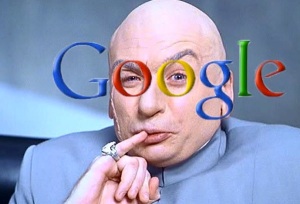
The online Bully
If negative SEO attacks can have so much power in the business world (it is currently illegal in many countries) how much more influence can a negative social media campaign have against a private individual. Three factors make social media the perfect medium for making assaults on someone’s character. Firstly, the nature of social sites means that many of the influencers in a person’s life will be connected with them via their webpages and so anything that is written on them will be highly visible in their peer groups and to employers etc. Secondly, the prevalence of mobile technology and the suitability of social media to an always connected environment make access easy and, finally, the ability to disguise a true identity behind an alias so as to preserve anonymity and avoid direct responsibility often empowers people to do things on the web that they may not do in meat space. All of this has seen the bullying move from the schoolyard to the internet and stalkers now follow your trail through cyberspace rather than by hiding in the bushes in your front garden.
Virtual Crime and Punishment

The scene of the crime
As is the case with most new technologies that come along, legislation to govern our use of the internet has been slow to develop. This is most likely due to the lack of a clear definition for the use and misuse of new technologies as people become used to dealing with them and find ways to use them which, whilst not illegal (at that moment), are not in accord with society’s expectations. So, as people begin to use new technologies, new laws evolve to govern their misuse and where computers are involved, the complexity that they represent naturally generates complex legislation to govern the purview of their lawful application.
The laws that govern our use of cyberspace are generally divided into legislation against specifically digital properties, like hacking someone’s email account or Facebook page, and using digital technology to make a personal attack on someone. The hacking laws were developed (at least here in Australia) late in the 1990s to protect computers against hackers and to make creating malware an offence. These laws are covered in Division 477 of the Federal Criminal Code (1995) and outline a range of high-tech crimes that have evolved out of the digital age. In short it says:
“A person is guilty of an offence if the person causes the unauthorised access, modification or impairment of a computer or the data held in a computer with the intention to commit, or facilitate the commission of, a serious offence against a law of the Commonwealth, a State or a Territory (whether by that person or another person) by the access, modification or impairment. Penalty: 10 years imprisonment.”
The second kind of legislation took much longer to evolve in the Parliament as its effects are far more insidious and difficult to prove. The boom in social media use has also created the conditions for the development of new interpersonal forms of communication and, while many of these new connections are very positive they have also created the conditions for their abuse and the new crimes in cyberspace at the beginning of the new millennium are cyberstalking and cyber bullying.
In June 2011 the Victorian Parliament amended the stalking laws to include the use of digital technology to harass someone. This law, now called Brodie’s Law, is an amendment to the Crimes Act (1958) and especially affects the Stalking and Personal Safety Intervention Orders acts (2008 and 2010). It makes it an offence to use the internet or a phone in a threatening, harassing or offensive way, making threats, stalking (including messaging someone to harm or scare them), accessing internet accounts without permission, defamation (spreading lies to intentionally hurt someone’s reputation) or encouraging suicide and carries a penalty of 2 years imprisonment.
How Far is Virtually Too Far?
This second type of virtual crime is much less concrete that the older anti-hacking laws simply because terms like ‘threatening’, ‘harassing’ and ‘offensive’ admit to a certain openness of interpretation. Unlike creating a virus that tries to steal users’ data (like credit card numbers and bank account details) from their hard drive, the effects of cyber stalking can be hard to pin down and their effects aren’t always as obvious as the case of the young woman for whom the law in Victoria has been named.
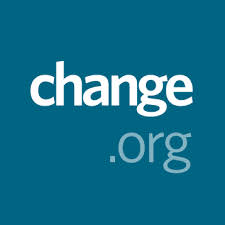
change.org logo
The recent death of an Australian celebrity which was apparently a suicide that was, at least in part, motivated by a bad reaction to cyber bullies, has once again brought the issue into the very public spotlight of the mainstream media. For the moment at least, this has put a very public face on the usually unknown victims of these crimes and has generated a huge amount of sympathy from the public that has seen over 40,000 signatures being added to a petition on Change.org demanding that the government and social media sites like Twitter take a stronger stance on cyberbullying. Of course the petition doesn’t have any concrete definitions for any of its demands and so it is really something of an empty gesture but at the same time it encourages us to ask where the line in the virtual sands lies between the use and the abuse of social media sites. At what point does sharp, stinging criticism become offensive harassment and exactly when does satire step over the line and become character assassination?
Because personal cyber-attacks come directly into the victim’s home via the web or their mobile phone it seems to share a lot in common with traditional domestic violence and for this reason the cyber specific stalking laws are amendments to the statutes that govern intervention orders. Generally, a transgression of acceptable cultural norms or a violation of another person’s rights in the form of indexed criminal behavior is a commonly accepted, although broad definition of domestic violence. Closer examination reveals that it is really a cluster or pattern of interrelated behaviors, which cannot only impact another person’s freedom and rights but also effect various aspects of physical health and emotional wellbeing and a comprehensive definition of domestic violence now includes all behaviors that exert physical force to injure, control, or abuse an intimate or family member, forced or coerced sexual activity, destruction of property, acts which threaten or abuse family pets, as well as nonphysical acts that threaten, terrorize, personally denigrate, or restrict freedom (Psychological Abuse in Violent Domestic Relations, edited by Daniel O’Leary, PhD, Roland D Maiuro, 2004). At the moment this defines behavior that would be considered to be cyberbullying or cyberstalking.
This implies that when your tweets shift from disagreeing with a point of view on some topic to making denigrating comments that refer to the person rather than what they have said that you may have strayed into cyberbullying territory. Similarly, stalking some celebrity or even just harassing someone that you don’t like via their Facebook page by leaving denigrating or purposefully damaging comments may be illegal and constitute a serious indictable offence regardless of whether you have any physical contact with the person or not. In addition, comments that you don’t consider to be offensive and which weren’t made with any intention of causing distress may be interpreted as being abusive by the person that receives them and, potentially, by the magistrate that they approach for an intervention order to make you stop making them. It is this uncertain level of interpretation that will continue to make these internet laws a point of public discussion for many years to come.
All of this also makes it a sure bet that the operators of the huge social media sites like Facebook and Google+ aren’t going to involve themselves in the social morass by taking responsibility for monitoring or removing any potentially litigious content until the definition of what is abusive on the web is much more clearly defined. In the meantime, as these issues become more commonplace it still may be alright to jump onto your friend’s Facebook account while he’s passed out to post embarrassing pictures of him, but don’t be surprised if he slaps you with an intervention order for your trouble.
References:
Facebook’s Decennial
http://www.slate.com/blogs/future_tense/2014/02/03/facebook_10th_anniversary_social_network_turns_10_looks_back_at_its_history.html
http://www.dailystar.co.uk/tech/363872/FACEBOOK-TURNS-10-Here-s-ten-fun-facts-you-never-knew-on-Facebook-s-10th-birthday
http://www.abc.net.au/news/2014-02-04/facebook-turns-10-the-social-network-in-numbers/5237128
http://en.wikipedia.org/wiki/Facebook
Web 2.0
http://en.wikipedia.org/wiki/Web_2.0
http://www.webopedia.com/TERM/W/Web_2_point_0.html
Online Presence Statistics
http://www.reviewpro.com/reputation-research-statistics-2767
http://www.linkedin.com/today/post/article/20130604134550-284615-15-statistics-that-should-change-the-business-world-but-haven-t
High Tech Crime
http://www.afp.gov.au/policing/cybercrime/hightech-crime.aspx
Criminal Code Act (1995)
http://www.comlaw.gov.au/Details/C2012C00776/Html/Text#_Toc339546822
Crimes Amendment (Bullying) Act 2011
file:///C:\Documents%20and%20Settings\D%20G%20Mattichak\My%20Documents\Downloads\11-020a.docx
http://www.justice.vic.gov.au/home/safer+communities/crime+prevention/bullying+-+brodies+law
http://www.findlaw.com.au/articles/4793/cyberstalking-and-the-law-.aspx
Charlotte Dawson Cyber Bullying Petition on Change.org
http://www.change.org/en-AU/petitions/the-australian-government-charlotte-s-law-tougher-cyber-bullying-legislation
Psychological Abuse in Violent Domestic Relations, edited by Daniel O’Leary, PhD, Roland D Maiuro, 2004
http://books.google.ca/books?id=pv6XIjT4MpUC&printsec=frontcover#v=onepage&q&f=false
Share my posts with others:
 The Australian outback is the home for some of the most unusual animals in the world and, in the years that I have lived here I have been lucky enough to meet many of the unique fauna of Terra Australis while rambling about in the bush. Most people think of animals like kangaroos and koalas in association with Australia and the Great Southern Land also has a reputation for being the home of some of the most deadly snakes and spiders on the planet. As unusual and deadly as these better known animals are, the Aussie bush hides a myriad of less well known creatures that are often even more bizarre than the emu and kangaroo that appear on the Commonwealth coat of arms.
The Australian outback is the home for some of the most unusual animals in the world and, in the years that I have lived here I have been lucky enough to meet many of the unique fauna of Terra Australis while rambling about in the bush. Most people think of animals like kangaroos and koalas in association with Australia and the Great Southern Land also has a reputation for being the home of some of the most deadly snakes and spiders on the planet. As unusual and deadly as these better known animals are, the Aussie bush hides a myriad of less well known creatures that are often even more bizarre than the emu and kangaroo that appear on the Commonwealth coat of arms. Perhaps the greatest threat to Australia’s delicate isolated ecosystem has been the introduction of several species of animals from other parts of the world. These feral animals have been both deliberately and accidentally released into the bush and often have a devastating effect on the indigenous fauna. Many of the small northern hemisphere animals like rats and mice and rabbits have multiplied to plague proportions in Australia due to a lack of their natural predators to keep their numbers in check. Often, the pest control measures that were used to combat the spread of these feral animals, like the introduction of foxes to limit rabbit populations in the mid 1800s, has simply compounded the problem. One of the most famous environmental disasters of this sort was the introduction of the Cane Toad to the sugarcane fields which were supposed to devour an insect pest and instead took up a diet of native creatures, totally ignoring the original target species. Of course domestic animals like dogs and cats have also escaped into the bush and become feral, generally rising to the top of the food chain because of the lack of any real competition for their superior hunting skills. In addition, there are several more exotic creatures that now inhabit the outback like camels, water buffalo and wild horses.
Perhaps the greatest threat to Australia’s delicate isolated ecosystem has been the introduction of several species of animals from other parts of the world. These feral animals have been both deliberately and accidentally released into the bush and often have a devastating effect on the indigenous fauna. Many of the small northern hemisphere animals like rats and mice and rabbits have multiplied to plague proportions in Australia due to a lack of their natural predators to keep their numbers in check. Often, the pest control measures that were used to combat the spread of these feral animals, like the introduction of foxes to limit rabbit populations in the mid 1800s, has simply compounded the problem. One of the most famous environmental disasters of this sort was the introduction of the Cane Toad to the sugarcane fields which were supposed to devour an insect pest and instead took up a diet of native creatures, totally ignoring the original target species. Of course domestic animals like dogs and cats have also escaped into the bush and become feral, generally rising to the top of the food chain because of the lack of any real competition for their superior hunting skills. In addition, there are several more exotic creatures that now inhabit the outback like camels, water buffalo and wild horses.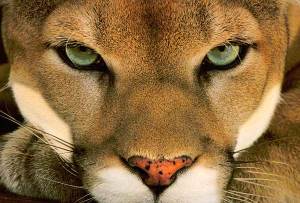 Australian Big Cats supplies a number of alternative stories, the most common one involving the crash of a circus train on the outskirts of some remote outback town that resulted in the big cats escaping and the whole incident being hushed up to avoid official investigations. The evidence presented in the book makes a convincing argument for the existence of large cats in the bush and advances several theories about not only how they came to be there, but also which particular species fits the profile of the hundreds of sightings. While pumas seem to be the most likely, the possibility that there may be jaguar or even leopard living in the bush is something of a sobering thought. Until I read Lang and Williams’ book I was under the impression that the great outdoors in the Aussie bush was a fairly innocuous place to pitch a tent- finding out that a jaguar may be watching me barbeque my steaks for dinner from the shadows of the mulga scrub, waiting for me to climb into my swag for the night has certainly changed my ideas about camping out under the stars.
Australian Big Cats supplies a number of alternative stories, the most common one involving the crash of a circus train on the outskirts of some remote outback town that resulted in the big cats escaping and the whole incident being hushed up to avoid official investigations. The evidence presented in the book makes a convincing argument for the existence of large cats in the bush and advances several theories about not only how they came to be there, but also which particular species fits the profile of the hundreds of sightings. While pumas seem to be the most likely, the possibility that there may be jaguar or even leopard living in the bush is something of a sobering thought. Until I read Lang and Williams’ book I was under the impression that the great outdoors in the Aussie bush was a fairly innocuous place to pitch a tent- finding out that a jaguar may be watching me barbeque my steaks for dinner from the shadows of the mulga scrub, waiting for me to climb into my swag for the night has certainly changed my ideas about camping out under the stars.
